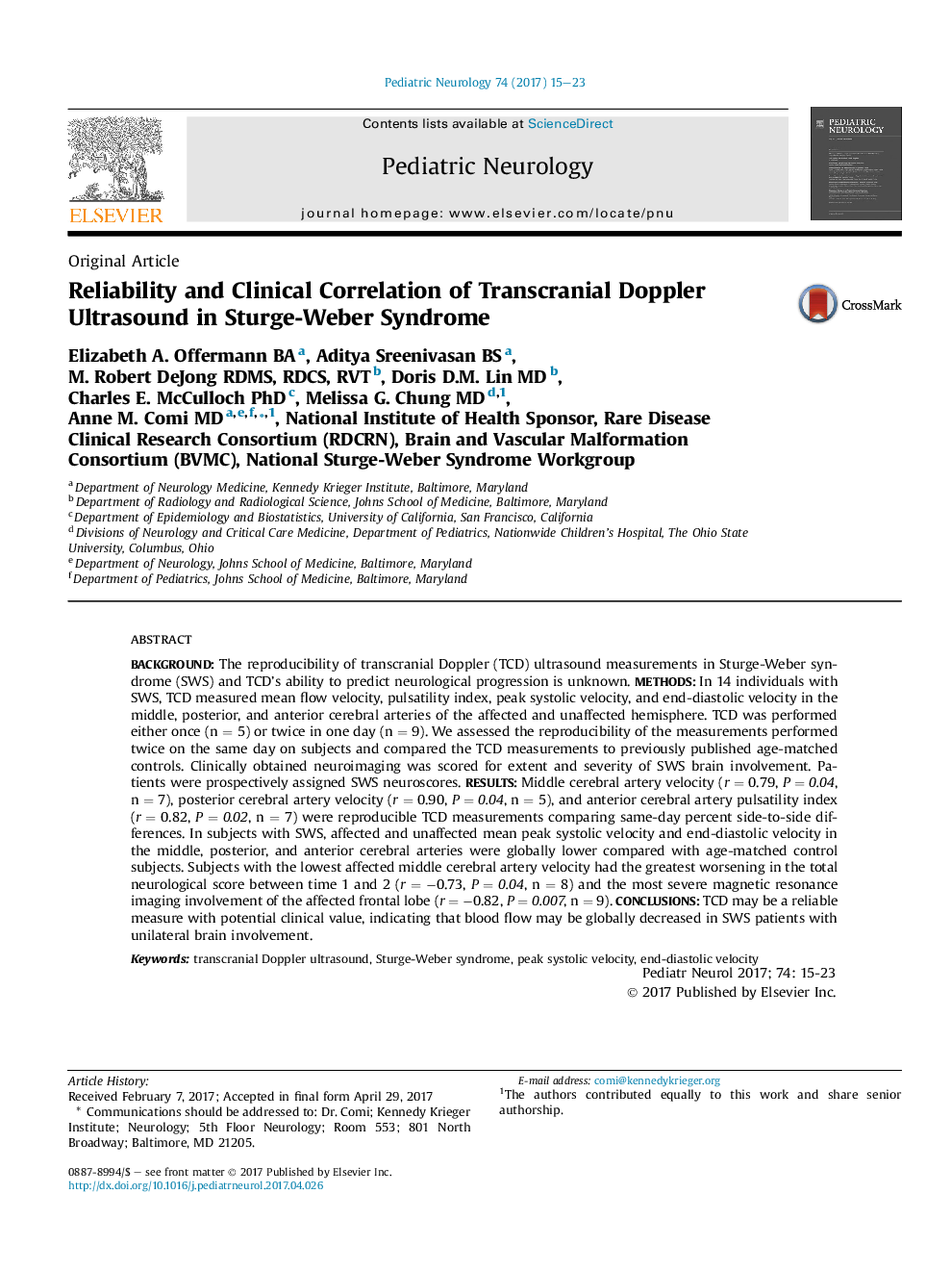| Article ID | Journal | Published Year | Pages | File Type |
|---|---|---|---|---|
| 5632879 | Pediatric Neurology | 2017 | 14 Pages |
BackgroundThe reproducibility of transcranial Doppler (TCD) ultrasound measurements in Sturge-Weber syndrome (SWS) and TCD's ability to predict neurological progression is unknown.MethodsIn 14 individuals with SWS, TCD measured mean flow velocity, pulsatility index, peak systolic velocity, and end-diastolic velocity in the middle, posterior, and anterior cerebral arteries of the affected and unaffected hemisphere. TCD was performed either once (n = 5) or twice in one day (n = 9). We assessed the reproducibility of the measurements performed twice on the same day on subjects and compared the TCD measurements to previously published age-matched controls. Clinically obtained neuroimaging was scored for extent and severity of SWS brain involvement. Patients were prospectively assigned SWS neuroscores.ResultsMiddle cerebral artery velocity (r = 0.79, P = 0.04, n = 7), posterior cerebral artery velocity (r = 0.90, P = 0.04, n = 5), and anterior cerebral artery pulsatility index (r = 0.82, P = 0.02, n = 7) were reproducible TCD measurements comparing same-day percent side-to-side differences. In subjects with SWS, affected and unaffected mean peak systolic velocity and end-diastolic velocity in the middle, posterior, and anterior cerebral arteries were globally lower compared with age-matched control subjects. Subjects with the lowest affected middle cerebral artery velocity had the greatest worsening in the total neurological score between time 1 and 2 (r = â0.73, P = 0.04, n = 8) and the most severe magnetic resonance imaging involvement of the affected frontal lobe (r = â0.82, P = 0.007, n = 9).ConclusionsTCD may be a reliable measure with potential clinical value, indicating that blood flow may be globally decreased in SWS patients with unilateral brain involvement.
